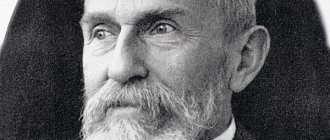Ambivalence is a term for duality that was originally used in psychology to refer to the presence of several polar ideas in the human mind. It should be noted that several polar ideas, desires or emotions can simultaneously exist in a person’s mind. The concept in question was adopted at the beginning of the nineteenth century, and for a long time was considered as the main symptom of schizophrenia.
The phenomenon of ambivalence was studied by such outstanding scientists as Carl Jung and Sigmund Freud, devoting a lot of attention to the “duality of consciousness” in their works. If we talk about the duality of consciousness from a medical point of view, we can say that in such a state, two thoughts can exist in the human brain that will not mix. From the psychological side, duality of consciousness is considered as a norm that does not require mental correction. Let's look at what ambivalence is and how it manifests itself.
Ambivalence (from Latin ambo – both + valentia – strength): a person’s ambivalent attitude towards something
Ambivalence is an example. Ambivalence of feelings
In relationships between people, ambivalence of feelings is quite common. This concept is defined by psychology as a contradictory attitude of the subject to an object, object, person, etc. He simultaneously accepts and rejects, refuses the object of his feelings.
This term was first introduced by the Swiss psychiatrist Bleuler, who characterized schizophrenia. However, the average person also experiences similar experiences. Experts associate ambivalence with the versatility of the internal needs that one person has, and the diversity of the surrounding world, which can attract and repel at the same time.
Z. Freud considered this phenomenon to be the norm, as long as it manifests itself in short periods and is not bright. Otherwise, neuroses begin to develop. A person can feel love and hate, pleasure and displeasure, sympathy and antipathy at the same time. Often one feeling is disguised as another.
In psychology there are two definitions for this phenomenon:
- Ambivalence is the duality of a person’s feelings towards another individual, phenomenon or event. It often manifests itself in relation to objects that have an ambiguous relationship for a person. This is different from exclusively positive or negative emotions, which some psychoanalysts interpret as idealization or devaluation of the object. Thus, ambivalence of feelings is considered normal.
- Ambivalence in psychiatry is considered as a splitting of personality, which alternately experiences one and then opposite feelings.
Ambivalent feelings are emotions that a person experiences simultaneously. Mixed feelings are experiences that manifest themselves alternately.
Vivid examples of the manifestation of ambivalence are child-parent relationships and unions of people in love. On the one hand, a child may wish his parents to die, on the other hand, he may need them and sincerely love them. On the one hand, partners can love each other, but at the same time understand that they hate each other.
How can this be explained? The duality of feelings can be explained by the fact that in a person instinctive needs and the foundations of society are intertwined, which are embedded in the person’s head. Take, for example, a love union where spouses love and hate each other.
- On the one hand, they are forced to play the role of lovers because they feel the need for it. Perhaps they no longer love each other, but since they remain together, they are forced to direct it towards those who are nearby. This can be explained by the principles that are accepted in society, where spouses should love each other, even if this is not the case.
- On the other hand, spouses hate because they identify situations where their loved ones hurt them. Consciously, they understand that they are not loved, otherwise they would not cause pain. This causes hatred, which they try to hide, since it can destroy the union that is accepted and encouraged by the people around them.
Ambivalence - normal or disease
The word comes from the merger of two Latin expressions: both ambo and strength valentia. Literally, this means opposite directions of feelings of equal strength, for example, the uncontrollable ability to love and hate someone at the same time.
Definition in psychology
Since the time when, in addition to medical psychiatry, psychologists paid attention to ambivalence, it was proposed to consider it in two planes, namely:
- in psychoanalysis;
- in clinical psychology.
Sigmund Freud, a psychologist and psychoanalyst from Austria, considered ambivalence to be a complex range of feelings inherent in every person and embedded in the depths of the subconscious. He considered this to be the norm, indicating that from birth an individual has attractions to both life and death.
Attention! Ambivalence in psychology is a sign of the normal state of a person who has not clearly defined his attitude towards someone or something. This is a borderline condition that just needs to be closely monitored rather than attempted to be treated.
“From love to hate there is one step!” - a well-known phrase says that in one person in relation to another, two opposite feelings can coexist in the depths of consciousness. One of them currently has an advantage, but for some reason the situation may change
This is a borderline condition that just needs to be closely monitored rather than attempted to be treated. “From love to hate there is one step!” - a well-known phrase says that in one person in relation to another, two opposite feelings can coexist in the depths of consciousness. One of them has an advantage at the moment, but for some reason the situation may change.
By the way. Masters of psychoanalysis argue that deviation is most likely an unambiguous position of sensations. Having divided the world only into “black” or “white”, a person is deprived of the taste of life - halftones. Helping him regain his natural ambivalence is the task of the psychoanalyst.
This case is exactly what clinical psychology does. The individual experiences a splitting of the ego. The psychological defense mechanisms of his consciousness periodically change his attitude towards the object of feelings.
Example. The son idolizes his parents in the morning (they are the best), and by the evening he is ready to kill them (it would be better if they did not exist at all). This is a borderline mental state in which the son sincerely believes that those parents who were with him in the morning are good, and those who are with him in the evening are bad.
Important! Internal defense works with distortion so that the son cannot collect his feelings into a single whole and apply them to one object - his parents. For an individual, the same object is spread over time, and different relationships are applied to it
Ambivalence as the norm
What is it in psychiatry
Psychiatry considers ambivalence as a manifestation of a mental disorder. The Swiss Bleuler considered it a direct sign of schizophrenia or any form of schizoidism (withdrawal from reality by withdrawing into oneself). His colleagues in psychiatry note that ambivalence is not necessarily a separate pathology, but may be associated with the following disorders:
- chronic depression;
- phobias and panic fears;
- OCD – obsessive-compulsive disorder;
- BAD – bipolar affective disorder;
- neurosis.
People prone to reflection - self-analysis also have signs of ambivalence in their arsenal.
Schizophrenia
Therapy methods
When a person is moderately ambivalent, which is accompanied by the absence of negative manifestations of this condition, there is no need to use various treatment methods. In this case, duality is a characteristic feature of consciousness. Medical intervention is required only in situations where an ambivalent attitude towards the outside world leaves a negative imprint on the usual life activities. In this situation, a feeling of discomfort caused by internal conflicts can become a kind of signal about the presence of mental disorders. Experts do not recommend that people with such problems independently look for various methods of resolving conflicts, as there is a high risk of developing more serious complications.
Drug therapy
To date, there are no narrowly targeted medications that can eliminate the duality of consciousness. The treatment strategy, as well as the means used, are considered on an individual basis . Most often, the choice of a specific medication is made on the basis of accompanying symptoms that complement the clinical picture.
As part of the complex treatment of borderline conditions, drugs from various drug groups are used. These can be either mild sedative medications or more “powerful” tranquilizers and antidepressants. The action of such drugs is aimed at suppressing the severity of the disease and normalizing mental balance. In cases where the disease is severe and there is a high risk to the patient’s life, specialists may recommend that the patient’s relatives undergo therapy in a hospital setting.
Mental correction
Psychotherapy methods are based on various methods of identifying the causes of duality of consciousness. This means that the main emphasis in treatment is on psychoanalytic action. In order to achieve lasting results, a specialist needs to identify the root cause of ambivalence . In situations where the role of the triggering mechanism is assigned to various traumatic circumstances that have childhood roots, the specialist must carefully “work through” this moment. To do this, self-esteem should be increased and a sense of responsibility should be instilled in the patient. Increased attention is paid to the correction of the emotional-volitional sphere.
Many psychologists believe that ambivalence is inherent in every person without exception, but the difference lies only in the degree of its manifestation
When duality of consciousness is the cause of the appearance of phobias and increased anxiety, the main emphasis of psychotherapeutic treatment is on combating problematic issues in the patient’s life. The desired effect can be achieved both through independent training and group classes aimed at combating internal fear and personal growth.
In conclusion, it should be said that duality can be both a distinctive feature of the human psyche and a symptom of a disease. That is why it is very important to pay due attention to your own condition. The emergence of a feeling of discomfort due to an ambivalent attitude towards the world around us requires urgent consultation with a specialist. Otherwise, the risk of possible negative consequences for human life increases every day.
Examples of ambivalence
Every person has encountered ambivalent states, thoughts and experiences at least once. Surely you can remember a situation in your life when you couldn’t make a choice, because both options seemed right to you. To better understand what ambivalence is, let's look at a few common examples.
- Jealousy. This condition makes us have a contradictory attitude towards our loved one. The thought that he can deceive us causes anger, which competes with love experiences and other warm feelings. We suppress bad emotions, but the negativity gradually accumulates, leading at some point to a scandal or a nervous breakdown. This is why jealousy is so destructive to relationships.
- Attitude towards parents. If a child was raised with strict methods, cruelly punishing for mistakes, this forms in him an ambivalent attitude towards his parents. As he grows up, he wants them to be proud of his successes. But at the same time, he tries to “disengage” himself from them, not letting them into his life.
- Sympathy and rejection. Imagine a situation: a girl is very attracted to a guy, she enjoys his advances and attentions. At the same time, she doesn’t like (and even “infuriates” her) his irresponsibility or other shortcomings. Therefore, she does not want to push him away, but she does not agree to a relationship either.
- Attitude towards adoptive parents. Adopted children are usually very afraid that their new family will also stop loving them and abandon them. Therefore, they maintain an ambivalent attitude towards their adoptive parents: they rejoice in their care, but do not allow themselves to become strongly attached to them and even push them away deep down.
Ambivalence in relationships
People of different ages, both teenagers and adults, experience ambivalence towards a situation or a specific person, because the main reason is internal conflict due to dissatisfaction with what is happening. Freud believed that, up to certain limits, an ambivalent attitude towards someone can be considered the norm.
After all, sometimes, when you see a person in different situations, different impressions of him actually appear. For example, a girl likes a young man, he is polite and cultured, and suddenly in a certain situation she sees completely different manifestations of him, and now he evokes conflicting feelings, the sympathy does not go away instantly, and his behavior frightened or disappointed so much that it led to emotional splash.
A husband who has lived with his wife for many years rages in response to her words or behavior almost every day, however, this does not prevent him from caring for her when she is sick.
For the Western world, an unambiguous assessment of a person or event is more typical, while Eastern philosophy is that the world is initially dual, and there is good and bad in it at the same time. Therefore, the manifestation of such ambivalence in feelings speaks rather of an adequate perception of reality. It’s another matter if the emotional states from the relationship bring significant discomfort. Then it’s worth thinking and figuring out why this person hurts so much, what caused the contradictory emotional reaction to him? Perhaps the contradiction is not caused by duality itself, but rather by a misunderstanding of what kind of feeling arose for the person.
Causes of manifestation
Having understood a little what ambivalence is, it is worth adding that manifestations of duality do not always have pathological roots. Thus, infantilism, indecision and severely low self-esteem can also lead to the appearance of conditions that are described by ambivalence:
- The inability to make decisions may be due to an unwillingness to take responsibility for personal choices. After all, every time a person makes a decision, he receives not only benefits, but also the negative consequences of his own preferences. Therefore, fear of changing an uncomfortable but familiar stop, people may not make a decision at all, hesitating and postponing the decision for years.
- Fear of mistakes also leads to indecisiveness. The well-known saying that only those who do nothing make no mistakes applies only to the brave. After all, success implies a large number of mistakes, and only a few attempts will end in success.
- More serious manifestations of ambivalence can cause prolonged exposure to stressful situations and depression.
Modern psychology considers moderate ambivalence, which is not pathological, a sign of maturity. With age, a person sees the picture of the world more fully and evaluates everything that happens around him differently, be it relationships with people or behavior in any situation.
Some people easily enter into intimate relationships and get married after a month of dating, while others spend hours choosing socks or groceries.
It has been noticed that those who have difficulty making decisions can be very useful, if the decision itself is not simple, while they are thinking, they evaluate the situation from different sides, then the answer turns out to be more reasoned, and the time spent on the choice did not allow them to make a mistake with a hasty action.
It is worth noting that feelings and emotions are very subjective and depend on other aspects of the personality. In addition, emotions are not stable and change like reflections on water from all external influences. The human condition is very plastic and changeable. Feelings take longer to manifest, but they do not exist on their own, but only in relation to a specific object. Therefore, the manifestation of ambivalent feelings is often a completely normal reaction to external stimuli.
In people with unambiguous reactions, their attitude towards work is formed on the basis of one sign, for example, the level of salary or disposition to this particular activity. A person with ambivalent thinking will remember the negative after the boss’s remark, however, good relationships in the team will make him more likely to stay and adapt to the circumstances. There are many such examples of the manifestation of ambivalent feelings; they speak of the ability to see different sides of a person.
Methods of correction and treatment
Being one of the mental characteristics of a person, the state of duality does not always need correction. Only if you notice obvious deviations or discomfort in your daily activities should you contact a specialist.
There is no specific cure ; the doctor will select pharmacological drugs based on the client’s condition. Perhaps psychocorrection of internal contradictions in beliefs and emotional reactions to an object or event will be sufficient. Since our reactions are largely determined by the upbringing and pressure of a certain cultural environment laid down from childhood, it is useful to revise outdated concepts from time to time, because everything changes and the changed surrounding reality requires new reactions to change.
Duality classification
The definition of ambivalence in psychology was first given in 1910 by Eugen Bleuler, a specialist in the field of psychiatry. It was this Swiss doctor who coined the terms schizophrenia and autism and established the connection between alcoholism and neurosis.
According to Bleuler, there are three main types of ambivalence: volitional, intellectual and emotional.
Volitional ambivalence means the inability of an individual to decide on one of the options for action. The dual situation was described many centuries ago in the parable of Buridan’s donkey, who found it difficult to choose one of the armfuls of hay and died of hunger. A state of endless choice leads to the inability to act and accept responsibility.
Photo: yandex.uz
Intellectual ambivalence - following opposing philosophical ideas. Simply put, a person preaches the condemnation of racism and the equality of nations, while at the same time experiencing hostility towards black people.
Emotional ambivalence includes polarly different feelings towards the same object. So the son admires his father, dreams of becoming like him, but hates the despotism and authoritarianism of the parent, wishing him death.
Modern classification has added a fourth type - social ambivalence. Example: a person who observes religious rules and attends church, but lives in an economically and technically developed society, is the so-called Orthodox atheist.
Bleuler's colleague and contemporary Sigmund Freud applied the concept of “duality” to the simultaneous existence in the human subconscious of mutually exclusive motives, such as the desire for life and the desire for death. At the same time, Freud considered the norm to be ambivalence of emotions within acceptable limits, the excess of which leads to a neurotic state.
Causes of ambivalence in humans
An ambivalent state is a symptom of mental disorders. The reasons for their development are considered to be frequent stressful situations, conflicts, and strong experiences. As soon as the situation stabilizes, the duality disappears on its own. Sometimes ambivalence is a consequence of difficult relationships:
- Children develop ambivalence when they lack parental care or warmth. Another option is overprotection, when mom and dad allow themselves to invade the child’s personal space.
- Ambivalence between a man and a woman appears if one of them is not confident in his partner and constantly creates conflict situations. Another reason is instability in relationships.
Such situations provoke stress, depression, hysterics, and neurasthenic states. A psychotherapist, psychologist or psychiatrist can find out the exact cause of ambivalence. The choice in this case depends on the degree of its severity.
Concept and essence
Ambivalence is a contradictory attitude towards different objects, phenomena, and people. A person has conflicting experiences. The term appeared at the beginning of the 20th century thanks to the work of Eugen Bleier. The researcher argued that this phenomenon is more pronounced in people suffering from schizophrenia.
At the same time, the term was studied and developed by Sigmund Freud. His point of view differed from Bleier's. He argued that ambivalence is the peaceful existence of a person in whom opposing impulses collide in the soul.
He called these beliefs the foundations of personality. Sigmund Freud argued that they are inherent in every person from birth. Initially, positive emotions predominate. Negative ones will form throughout life. If conditions are unfavorable, negative emotions begin to appear more often and can provoke a person to commit inappropriate actions.
The next scientist who made a great contribution to the study of this phenomenon was Carl Jung. He argued that conscious and unconscious manifestations coexist in the general mechanism of mental action.
Concept of ambivalence
A term from Wikipedia: ambivalence is a state that denotes a dual attitude towards any object or event, that is, something or someone evokes two mutually opposite feelings in a person. For example, your own child evokes a feeling of great tenderness and at the same time a feeling of fatigue or irritation from his actions.
The definition of ambivalence was introduced at the beginning of the twentieth century by Eugen Bleuler , a Swiss psychiatrist known for his contribution to the creation of psychiatry and who studied various disorders, including schizophrenia. Considering duality to be a manifestation of this disease, he identified three types of it:
- Intellectual, in which a person has several contradictory ideas and reasoning about mutually exclusive things.
- Emotional, which is characterized by the simultaneous presence of negative and positive emotions and feelings towards one object or event.
- Volitional, the inability to choose anything due to continuous fluctuation between two opposing decisions. Therefore, the choice may not be made for a long time.
Sigmund Freud, an equally famous Austrian psychoanalyst, the father of psychoanalysis, who lived in the same era as Bleuer, gave the definition of ambivalence a different meaning. He considered it the basis of the coexistence in man of his two deepest impulses, the desire for death and the attraction to life.
The idea of duality is present in the works of Carl Gustav Jung, a Swiss psychiatrist (1875–1961), the founder of depth or analytical psychology. He collaborated with S. Freud and also made a huge contribution to the development of the theory and practice of psychology as a science.
In his works, he characterized duality with the following concepts:
- When combining positive and negative sensations when perceiving a certain object or phenomenon.
- Showing interest in many objects or phenomena simultaneously, fragmentation of the mental state and inconstancy.
- Universality, since many phenomena are accompanied by duality.
K.G. Jung noted that ambivalence is inherent in life as such, because success is often interspersed with defeats, good closely borders on evil, and despair lurks next to hope. In the literature on psychology you can read in sufficient detail examples from the practice of famous specialists about the manifestation of such feelings.
However, not all manifestations of ambivalence are signs of mental disorders.
Clinical picture
Since the term in question has many definitions, when drawing up a clinical picture we will rely on the criteria used in the original (psychiatric) context. These criteria are divided into three groups: emotions, thoughts and will. In the case when the ambivalent state is considered as a pathology, the patient has all three of the above components, which are generated by each other.
Emotional ambivalence
Duality affecting the emotionally sensitive sphere has the highest prevalence. This symptom, characteristic of many neuroses and other mental disorders, often occurs in completely healthy people. A clear sign of duality in the emotionally sensitive sphere is the presence of several opposing emotions. An ambivalent attitude is the presence of feelings such as hatred and love, curiosity and fear, contempt and sympathy. In most cases, a healthy person is in a similar state of nostalgia, where sadness about the past gives rise to joy from pleasant memories.
The danger of this condition is explained by the fact that sooner or later, one of the conditions takes on a dominant role. In a situation where fear accompanies curiosity, tipping the scales in favor of the latter can lead to traumatic consequences and a threat to life. The dominance of hatred over love causes the launch of defense mechanisms, in which a person, under the influence of his own emotions, can cause harm to both others and himself.
With ambivalence, a person simultaneously experiences positive and negative feelings towards someone or something.
Polar thoughts and ideas
Polar thoughts and ideas are an integral part of neurotic disorders. Obsessive thoughts and ideas that replace each other in the human mind are a peculiar characteristic feature of mental illness
It should be noted that polar thoughts in consciousness appear solely due to the duality of emotional perception. The very range of human ideas can be unlimited in size
Duality of thinking in psychiatry is considered as a “crack” in consciousness, which is the main symptom of schizophrenia.
Volitional sphere
Volitional duality is characterized as the inability to carry out a specific action due to the presence of several stimuli. In order to better understand this condition, let's consider a situation in which a person experiences extreme thirst. In such conditions, an ordinary person will take a glass, pour water into it and quench his thirst. With volitional ambivalence, patients refuse water or freeze in one position with a glass in their hand, while not paying attention to the strong desire to drink. Most often, most people encounter this phenomenon when they simultaneously feel the desire to stay awake and go to sleep.
Experts who study volitional ambivalence say that refusal to make independent decisions is most often generated by internal conflicts. The cause of such conflicts can be irresponsible behavior or, conversely, increased responsibility, accompanied by a fear of making a mistake. The cause of internal conflict may be reduced self-esteem and increased self-criticism, fear of public attention and a tendency towards perfectionism, increased anxiety, indecisiveness and various phobias. An attempt to avoid a difficult choice is accompanied by the appearance of two polar feelings - shame for one’s own indecision and a feeling of relief. It is by the presence of these feelings that experts confirm the theory that each type of duality is closely interrelated with each other.
Ambivalent emotions, like ambivalence itself, can be both a difference in human consciousness and a symptom of a disease
That is why, during a diagnostic examination, increased attention is paid to the background manifestations of this condition.
Ambivalent behavior can be a sign of emotional instability, and sometimes the first sign of the development of mental illness
The phenomenon of duality in psychology
Since its inception, ambivalence has been used as a term for duality only in the medical field . Much later, the great scientists of the nineteenth century began to mention the phenomenon in question, using ambivalence to characterize the characteristics of the psyche. It is important to note that this condition is normal from a psychological point of view and does not require treatment . In this area, only the degree of severity of this condition is important. According to Sigmund Freud, pronounced ambivalence is one of the symptoms of neurotic disorders. In addition, duality is often noted with the Oedipus complex and at certain stages of personal development.
Considering the above, a very logical question arises: why is this feature of human consciousness of such high importance? In order to understand the importance of ambivalence, one should carefully study the very model of the structure of human consciousness. In addition, increased attention should be paid to two vital instincts - eros (life) and thanatos (death). It is these instincts, inherent in a person from the moment of birth, that are the key manifestation of the phenomenon under consideration. Based on this theory, experts put forward the version that duality of consciousness is inherent in every person from birth and is not an acquired condition provoked by various factors.
But it is important to note that certain living conditions can have a negative impact on the human consciousness, which can cause a fragile balance to be upset. It is the disturbed mental balance that provokes the development of neuroses and other borderline conditions. Most often, such violations are observed in the following situations:
- Use of psychotropic drugs, alcoholic beverages and narcotic substances.
- Negative emotional shocks and stress.
- Psychotraumatic situations that leave an imprint on human consciousness.
- Using various practices and techniques to expand (change) perception.
When considering the question of what ambivalence is in psychology, it is important to mention that, according to experts, opposing ideas will sooner or later come into conflict, which will negatively affect consciousness. As a result of this conflict, one of the feelings may go into the subconscious. The result of this transition is that duality reduces its severity.
Ambivalence according to Bleuler is divided into three types










